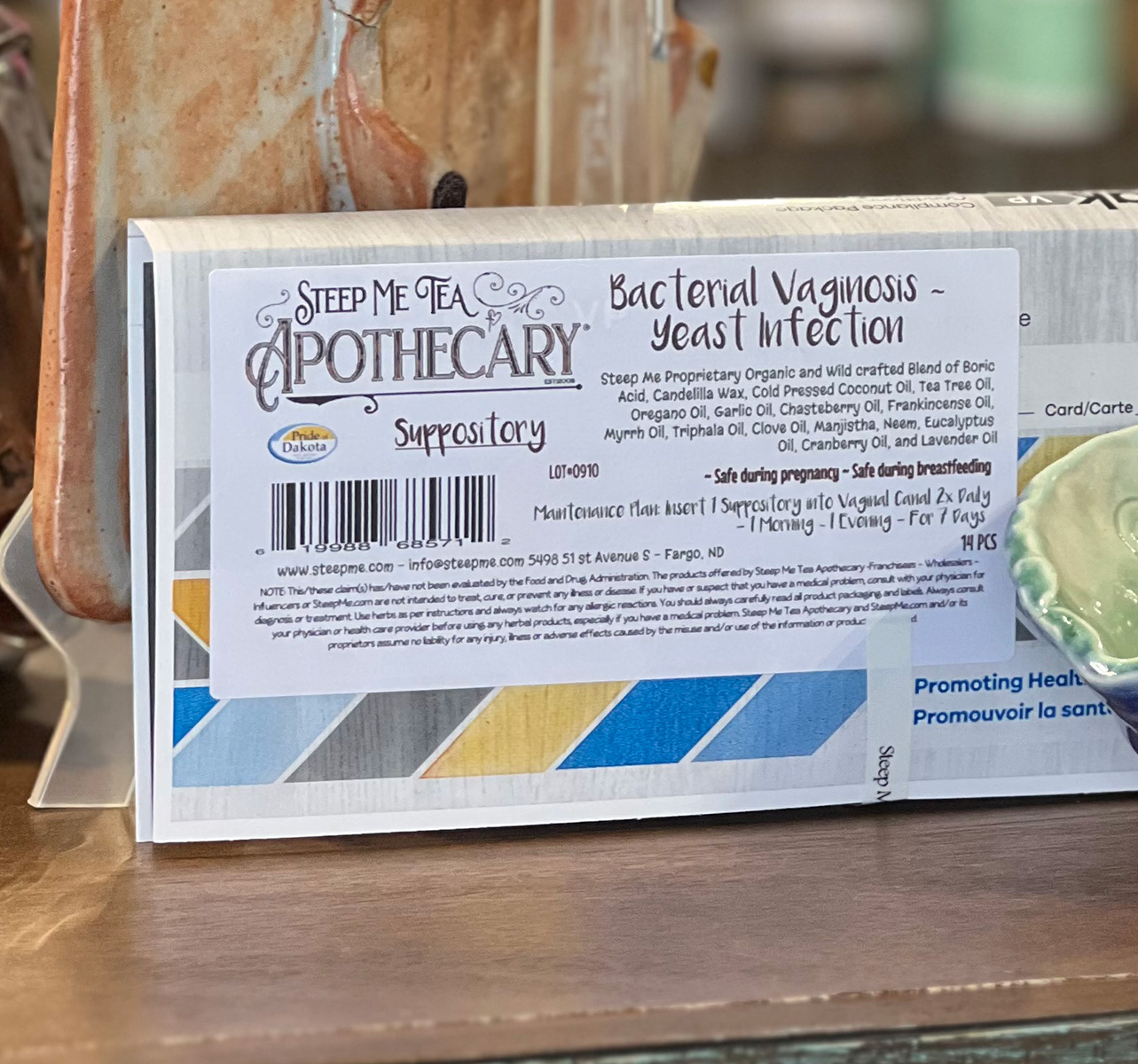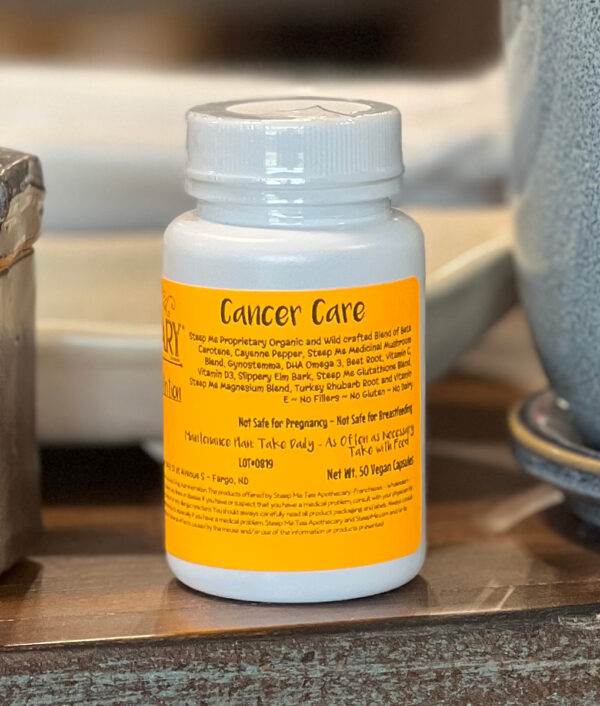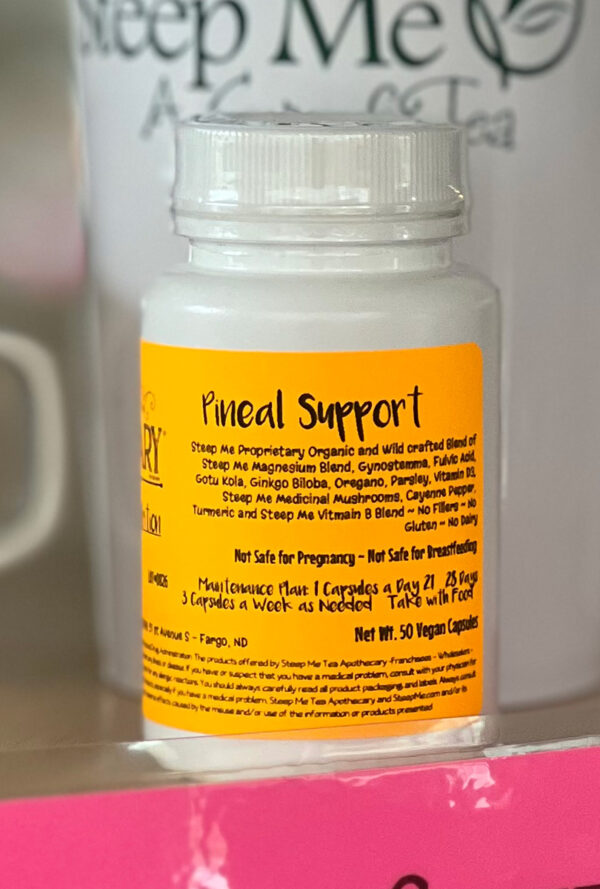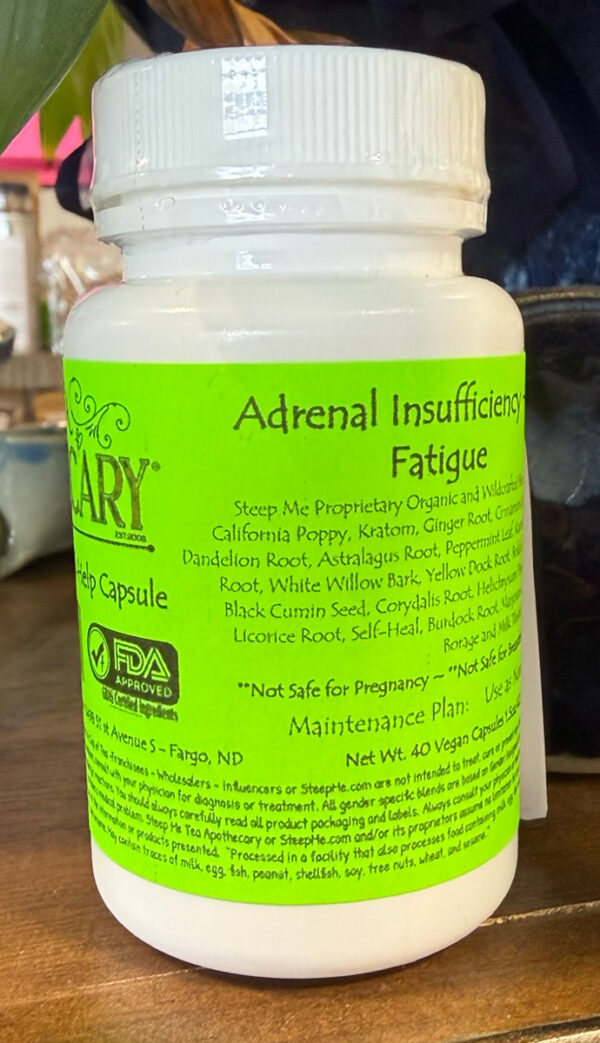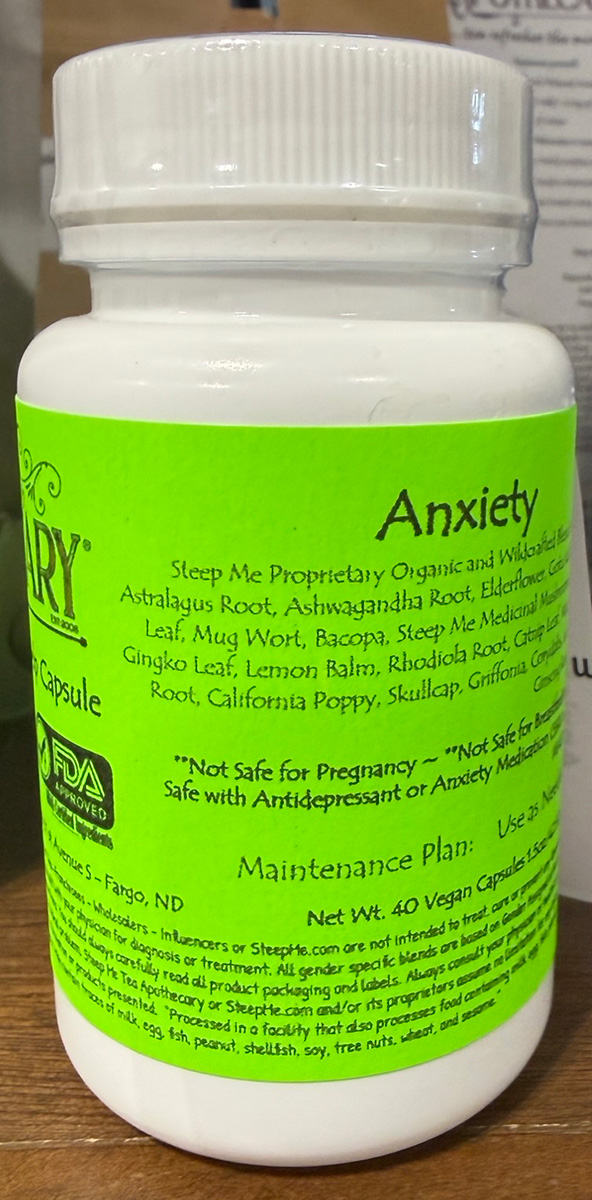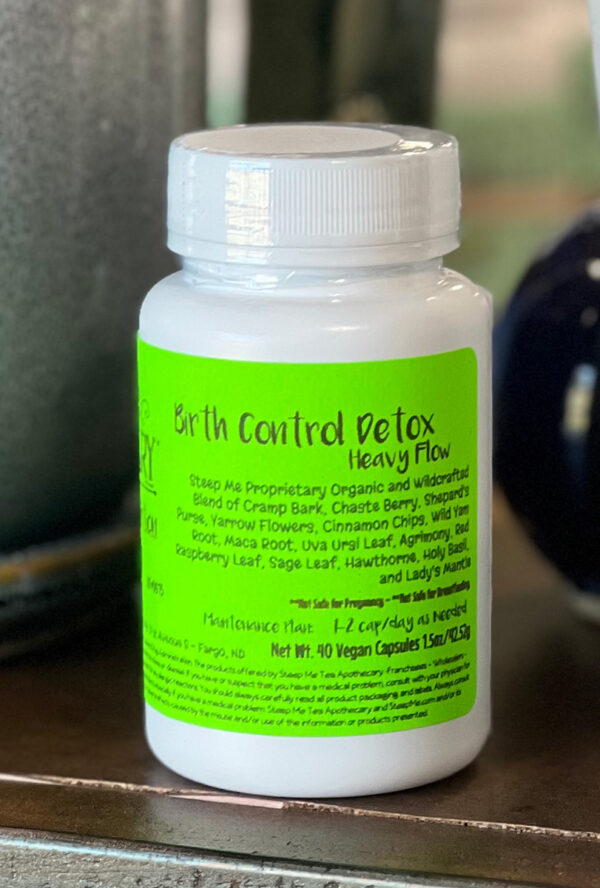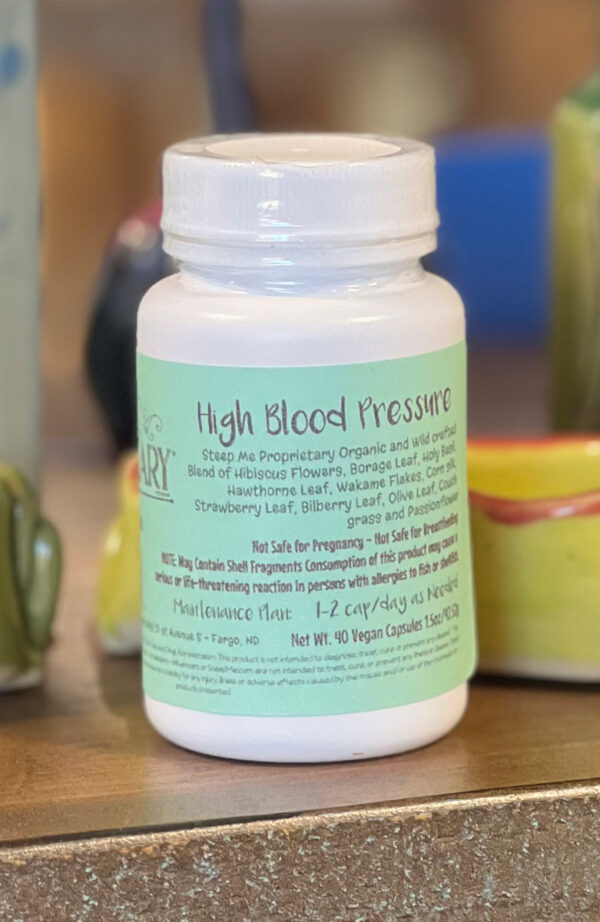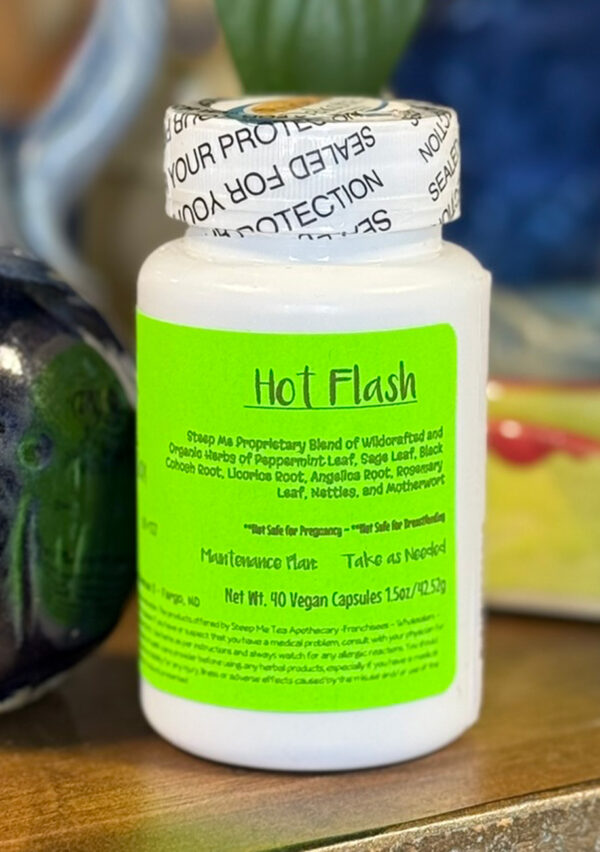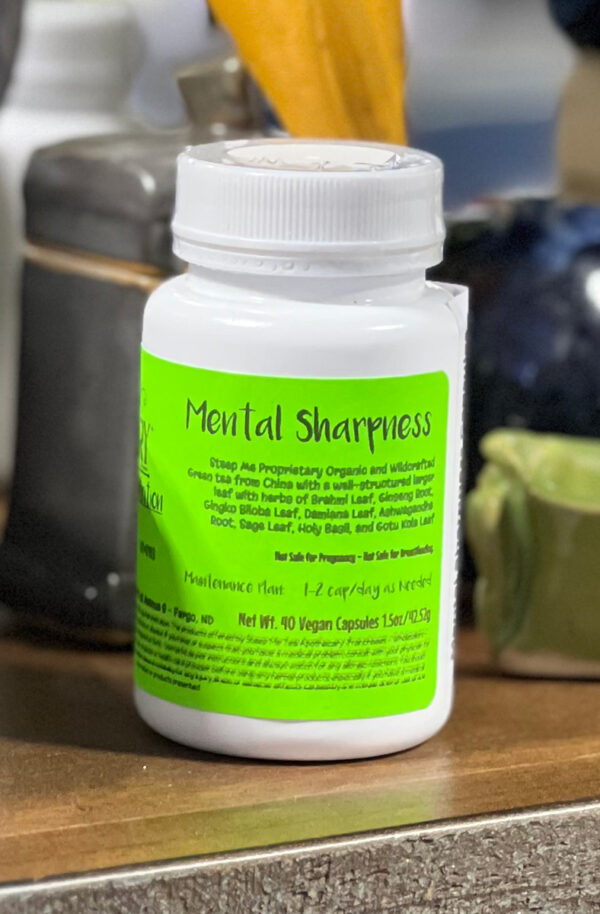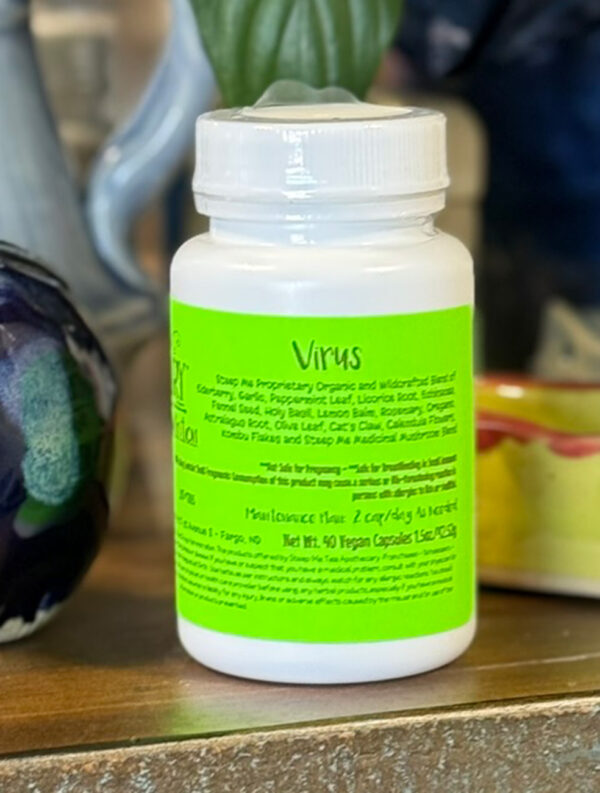With over 400 different kinds of loose tea that will exceed all tea lover’s expectations. You’re sure to find something you will love! All handcrafted by us in North Dakota.
Bacterial Vaginosis ~ Yeast Infection Suppository
$46.95
With this blend we are providing a healthy and potent blend of minerals and vitamins for managing the health of your vaginal and addressing a diagnosis of a Bacterial Vaginosis or Yeast Infection.
Description
Blender’s Notes Bacterial Vaginosis ~ Yeast Infection Suppository:
Steep Me Micro-Nutrition combinations are a wonderful way to get health benefits of different combinations of Vitamins and Minerals. With this blend we are providing a healthy and potent blend of minerals and vitamins for managing the health of your vagina and addressing a diagnosis of a Bacterial Vaginosis or Yeast Infection. Strong odor with vaginal discharge is a common symptom of bacterial vaginosis (BV). Itchiness and a burning sensation when urinating is also possible. Untreated BV may increase your chance of getting a sexually transmitted infection (STI). Your vagina naturally contains various kinds of bacteria. Usually, your body works to maintain the perfect balance between different bacteria, preventing specific types from growing out of control. But sometimes, this delicate balance is upset, resulting in bacterial vaginosis (BV). It is a common condition, but if you do not keep an eye on it, it can lead to complications and increase your risk of sexually transmitted infections (STIs). BV does not always cause symptoms. But when it does, they can include burning sensation when urinating, gray or white discharge, fishy-smelling discharge, itching and pain in vulva. Strong-smelling vaginal discharge is a hallmark symptom of BV. For some, the odor may get stronger after unprotected sexual intercourse if semen mixes with the discharge. Remember, your vagina naturally contains a delicate balance of diverse types of bacteria. BV happens when certain kinds of bacteria are present in greater amounts than usual. This overpowers the beneficial bacteria that usually keep their levels in check. For context, when you have BV, the “bad” bacteria in your vagina can be present in levels that are 100 to 1,000 times more than usual. Although doctors do not know exactly why, they do know that being sexually active increases the risk for bacterial vaginosis. Those who are not sexually active experience the condition in significantly smaller percentages. Bacterial Vaginosis: Symptoms and How to Treat It (healthline.com)
A vaginal yeast infection is a fungal infection that causes irritation, discharge and intense itchiness of the vagina and the vulva — the tissues at the vaginal opening. Also called vaginal candidiasis, vaginal yeast infection affects up to 3 out of 4 women at some point in their lifetimes. Many women experience at least two episodes. A vaginal yeast infection is not considered a sexually transmitted infection. But there is an increased risk of vaginal yeast infection at the time of first regular sexual activity. There is also some evidence that infections may be linked to mouth to genital contact (oral-genital sex). Yeast infection symptoms can range from mild to moderate, and include: Itching and irritation in the vagina and vulva, A burning sensation, especially during intercourse or while urinating, Redness and swelling of the vulva, Vaginal pain and soreness, Vaginal rash, Thick, white, odor-free vaginal discharge with a cottage cheese appearance, and Watery vaginal discharge. The fungus candida albicans is responsible for most vaginal yeast infections. Your vagina naturally contains a balanced mix of yeast, including candida, and bacteria. Certain bacteria (lactobacillus) act to prevent overgrowth of yeast. But that balance can be disrupted. An overgrowth of candida or penetration of the fungus into deeper vaginal cell layers causes the signs and symptoms of a yeast infection. Overgrowth of yeast can result from: Antibiotic use, which causes an imbalance in natural vaginal flora, Pregnancy, Uncontrolled diabetes, an impaired immune system, taking oral contraceptives or hormone therapy that increase estrogen levels, Candida albicans is the most common type of fungus to cause yeast infections. Yeast infections caused by other types of candida fungus can be more difficult to treat and need more-aggressive therapies. Factors that increase your risk of developing a yeast infection include Antibiotic use. Yeast infections are common in women who take antibiotics. Broad-spectrum antibiotics, which kill a range of bacteria, also kill healthy bacteria in your vagina, leading to overgrowth of yeast. Increased estrogen levels. Yeast infections are more common in women with higher estrogen levels — such as pregnant women or women taking high-dose estrogen birth control pills or estrogen hormone therapy. Uncontrolled diabetes. Women with poorly controlled blood sugar are at greater risk of yeast infections than women with well-controlled blood sugar. Impaired immune system. Women with lowered immunity — such as from corticosteroid therapy or HIV infection — are more likely to get yeast infections. Yeast infection (vaginal) – Symptoms and causes – Mayo Clinic
The goal of Ayurvedic treatment is to restore the normal balance of bacteria in the vagina. Ayurvedic treatment for BV involves Ayurvedic medicines, herbal remedies, diet and lifestyle changes to detox and flush out bad bacteria, reduce inflammation and boost immunity. Vata imbalance leads to abnormal discharge and painful intercourse, Pitta imbalance leads to foul smell, inflammation, burning sensation, skin rashes and skin allergies and Kapha imbalance leads to white color vaginal discharge, mild pain, and excess wetness due to heavy vaginal discharge. Ayurvedic herbs have antimicrobial properties that help to clear away the bacteria that is causing the infection. They also help to soothe and calm the inflamed tissues in the vagina, which can help to speed up healing. Ayurvedic medicine and herbs are highly effective in bacterial vaginosis treatment. To alleviate kapha and vata dosha, dry and hot in potency Ayurvedic medicines and herbs are used. Bacterial Vaginosis Infection | 6 Ayurvedic Herbal Remedies for Vaginitis (medhyaherbals.com)
We based our blend on Boric Acid. Boric Acid has become an increasingly popular natural remedy for both BV and yeast infections because it does have antiviral, antifungal, and bacteriostatic (i.e. able to inhibit the growth or reproduction of bacteria) activity, and helps bring the vagina’s pH back down to a normal level where harmful bacteria are less likely to thrive. Boric acid suppositories are also very well tolerated and that is the form this product takes. We also included nourishing Cold Pressed Coconut Oil. Coconut oil contains medium-chain fatty acids (MCFAs) such as lauric acid and caprylic acid, which have antibacterial, antiviral, antifungal, and antimicrobial properties. The MCFAs in coconut oil have been shown to effectively kill potentially harmful microorganisms such as bacteria, viruses, fungi, and parasites. Coconut oil has demonstrated antimicrobial effects on several diverse kinds of bacteria, including E. coli and bacteria that cause staph infections. Coconut oil was shown to help fight antibiotic-resistant Clostridium difficile diarrhea. In this mixture we added Tea Tree. Tea Tree is the strongest antimicrobial essential oil that is proven to work well for fungal and bacterial infections and has natural antimicrobial properties, and it effectively kills a variety of BV-causing bacteria, it preserves “good” Lactobacillus bacteria. Meaning, compared to antibiotics, it is more selective and less damaging to the overall vaginal microbiome. Oregano was also added and used as a natural medicine since ancient times, and its benefits seem endless. Oregano oil is loaded with compounds called phenols, terpenes, and terpenoids. These compounds have powerful antioxidant properties. Better yet, oregano oil has also been known to have anti-inflammatory and anti-fungal properties. Oregano oil has even been used as a natural antibiotic. Garlic Oil was included because it contains potent compounds its chemical properties have been shown to aid in stopping the growth of the Candida fungus responsible for yeast infections and has strong antibacterial properties, and it has long been used as a home remedy for BV. Next, we added Chaste berry, also known as Vitex agnus-castus because it is often used for its hormone-balancing properties, contains several flavonoids including casticin, kaempferol, and quercetagetin. These items have anti-inflammatory and antioxidant properties. They may help protect cells from damage from oxidative stress and inflammation. Frankincense and Myrrh were used because of its anti-inflammatory and antimicrobial properties and high antioxidant content, anti-bacterial, anti-fungal, anti-parasitic, and possible anti-cancer properties. They are a natural remedy that has been studied for its antifungal activity against dermatophytes.
Next, we included Triphala Oil because it helps white discharge and pelvic pain. Clove Oil was included because it contains Eugenol and carvacrol which are two important chemical properties for suppressing the overgrowth of yeast fungus and helps inflammation caused by a fungal infection and help heal faster because it has antioxidant and anti-inflammatory properties. Clove oil is a well-known folklore remedy for treating thrush and vaginal yeast infections. We also added Manjistha and Neem. These herbs are known for their blood-purifying properties. It has been traditionally used to treat various skin conditions and infections due to its anti-inflammatory and antibacterial properties. For yeast infections, particularly candidiasis, they can be beneficial. They help manage symptoms and support the body’s natural healing processes. This combination can help to strengthen the vaginal mucosa and balance bodily doshas and for white discharge and pelvic pain. Eucalyptus Oil was included. It contains excessive amounts of eucalyptol or 1,8-cineole. Eucalyptus oil is amazingly effective in treating colds, flu, and congestion and has excellent antimicrobial effects that work against many types of bacteria, viruses, and fungi. The same study also states that it has excellent anti-inflammatory, analgesic, spasmolytic and antioxidant effects. Eucalyptus oil was traditionally used to treat wounds and possesses many of the properties that can help nourish the skin, heal wounds, and treat chronic skin conditions like acne. It has excellent antiseptic, anti-inflammatory, antibacterial and anti-fungal properties which make it ideal for a range of skin issues including skin infections, cuts, scrapes, and bites. Eucalyptus oil is known for its antimicrobial properties, which can help in maintaining a cleaner and healthier vaginal environment. Cranberry was included because it helps lower the risk of urinary tract infections (UTIs), which can cause symptoms such as pain, itching, and burning in the vaginal area. Finally, we added Lavender. Lavender is particularly good at healing microbial infections that cause many common diseases, such as Candida. The antifungal property in this oil effectively eliminates the yeasts causing Candida. This oil provides a soothing effect on inflamed tissues by reducing pain and itching.
NOTE: “This/these claim(s) has/have not been evaluated by the Food and Drug Administration. This product is not intended to diagnose, treat, cure or prevent any disease.”
Features Bacterial Vaginosis ~ Yeast Infection Suppository:
- Ready to Go
- All Wildcrafted Herbs
- All Organic where Wildcrafted is not available.
- Dosing: Insert 1 Suppository into Vaginal Canal 2x Daily – 1 Morning ~ 1 Evening – For 7 Days
- Contains 14 Suppositories – Use until Gone
Ingredients: Steep Me Proprietary Organic and Wild crafted Blend of Boric Acid, Candelilla Wax, Cold Pressed Coconut Oil, Tea Tree Oil, Oregano Oil, Garlic Oil, Chasteberry Oil, Frankincense Oil, Myrrh Oil, Triphala Oil, Clove Oil, Manjistha, Neem, Eucalyptus Oil, Cranberry Oil, and Lavender Oil
Alternatively, try our Hormone Balance Phyto~Nutrition Tea OR Hitch Woman’s Phyto~Nutrition Tea OR Candida Phyto~Nutrition Tea OR Bacterial Infection Phyto~Nutrition Capsules
** Safe for Pregnancy ~ Safe for Breastfeeding
NOTE: This/these claim(s) has/have not been evaluated by the Food and Drug Administration. The products offered by Steep Me Tea Apothecary -Franchisees – Wholesalers – Influencers or SteepMe.com are not intended to treat, cure, or prevent any illness or disease. If you have or suspect that you have a medical problem, consult with your physician for diagnosis or treatment. Use herbs as per instructions and always watch for any allergic reactions. You should always carefully read all product packaging and labels. Always consult your physician or health care provider before using any herbal products, especially if you have a medical problem. Steep Me Tea Apothecary and SteepMe.com and/or its proprietors assume no liability for any injury, illness or adverse effects caused by the misuse and/or use of the information or products presented.
NOTE: When using Teas, Capsules, Tinctures and Micro-Nutrition to help with your ailment ~ please remember this is a marathon ~ we recommend an investment of time of at least 6 months to see positive change. Any gender specific blends are based on gender assigned at birth.
Additional information
| Size | , , |
|---|
Benefits
Micro~Nutrition comprises of essential dietary elements required by organisms in varying quantities to regulate physiological functions of cells and organs. Micro~Nutrition supports the health of organisms throughout their entire lifespan.
Related products
Adrenal Insufficiency ~ Fatigue Capsules ~~ GRAS Certified Ingredients
$82.95
Anxiety Capsules ~~ GRAS Certified Ingredients
$70.95
Hot Flash Capsules
$54.95
Mental Sharpness Capsules
$54.95

